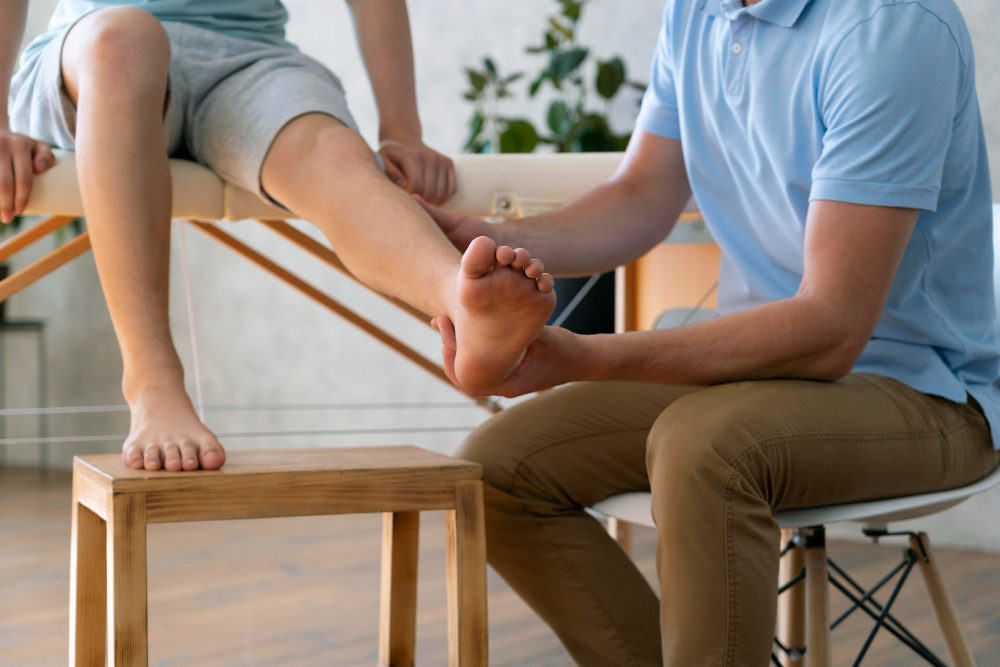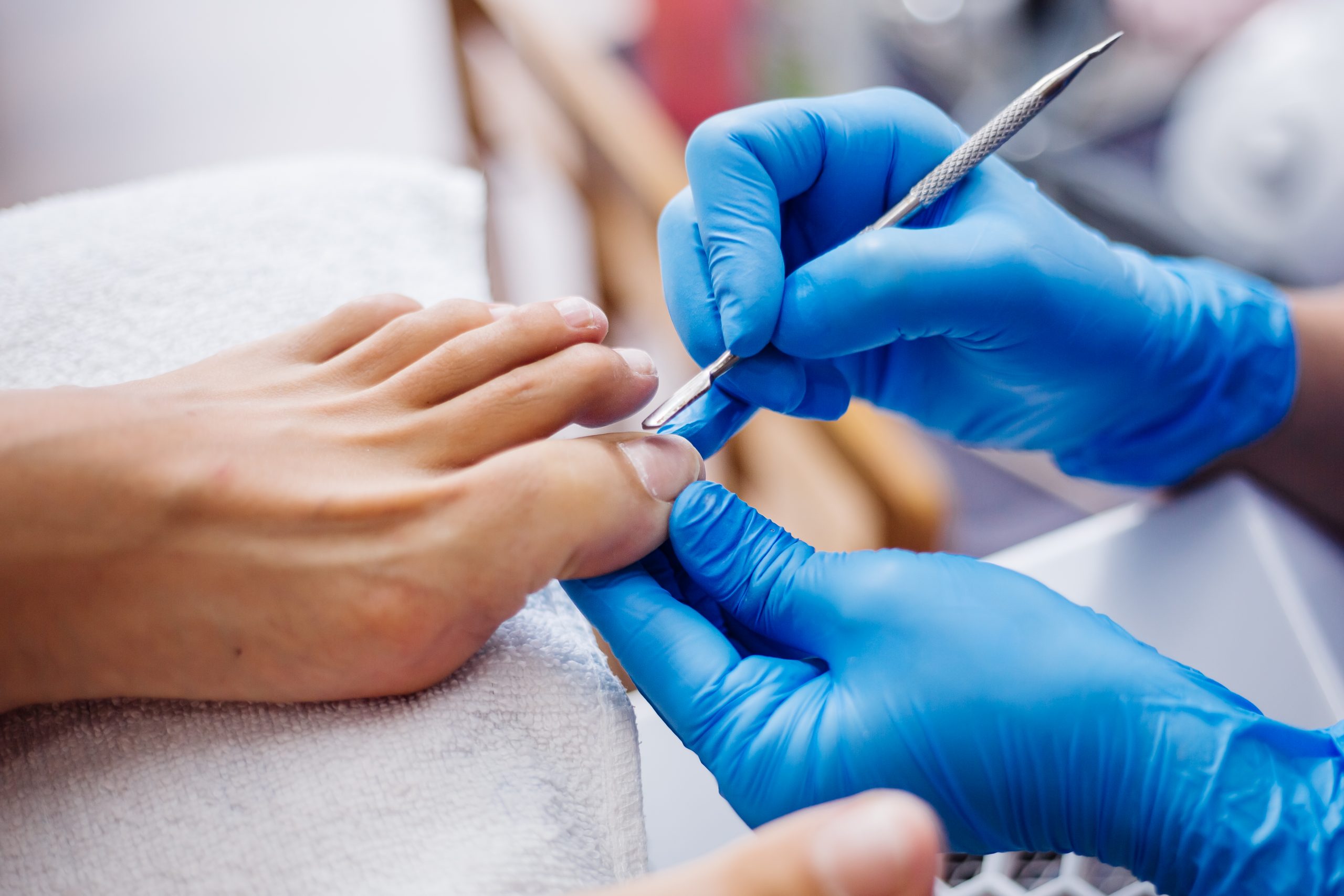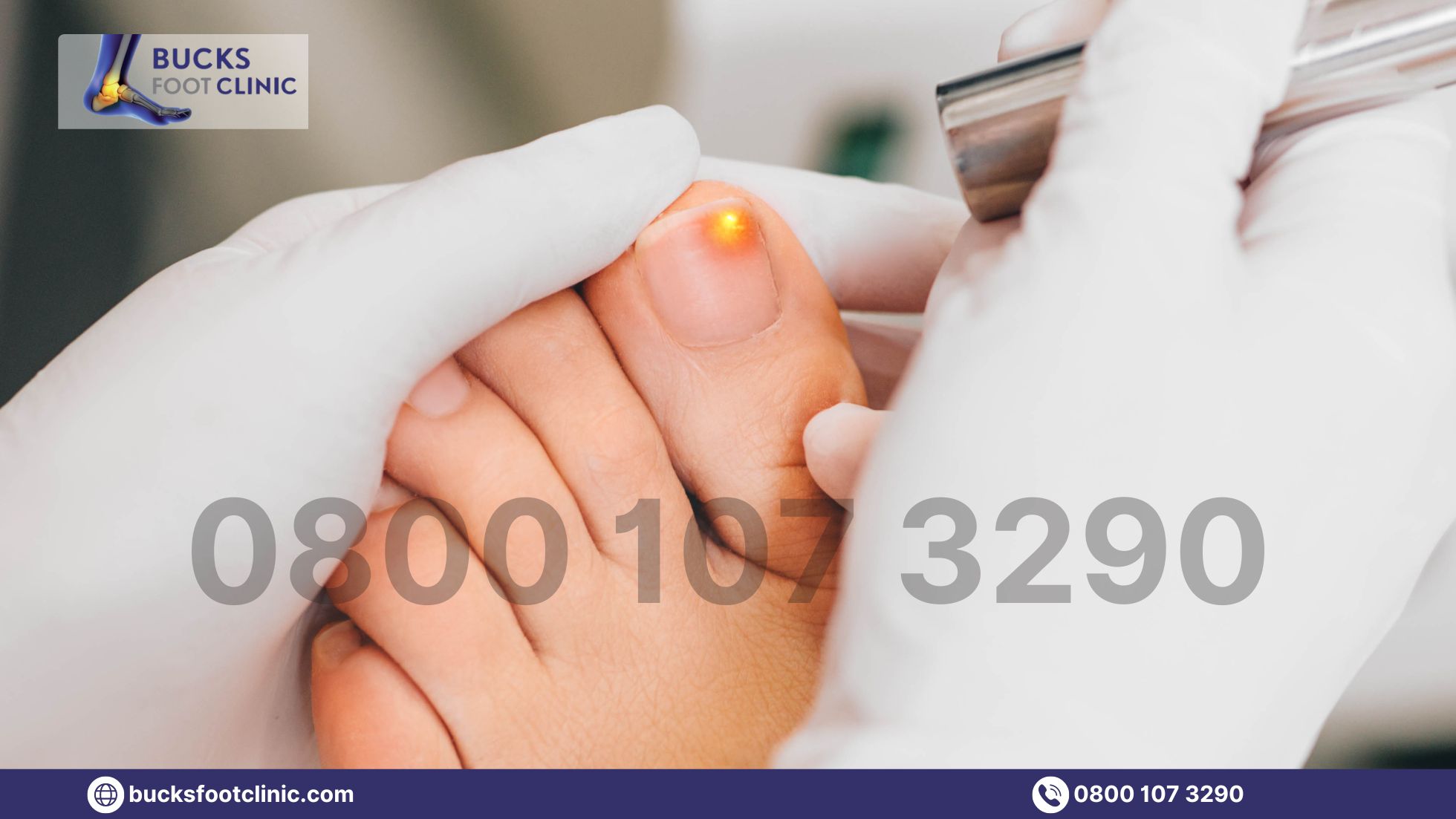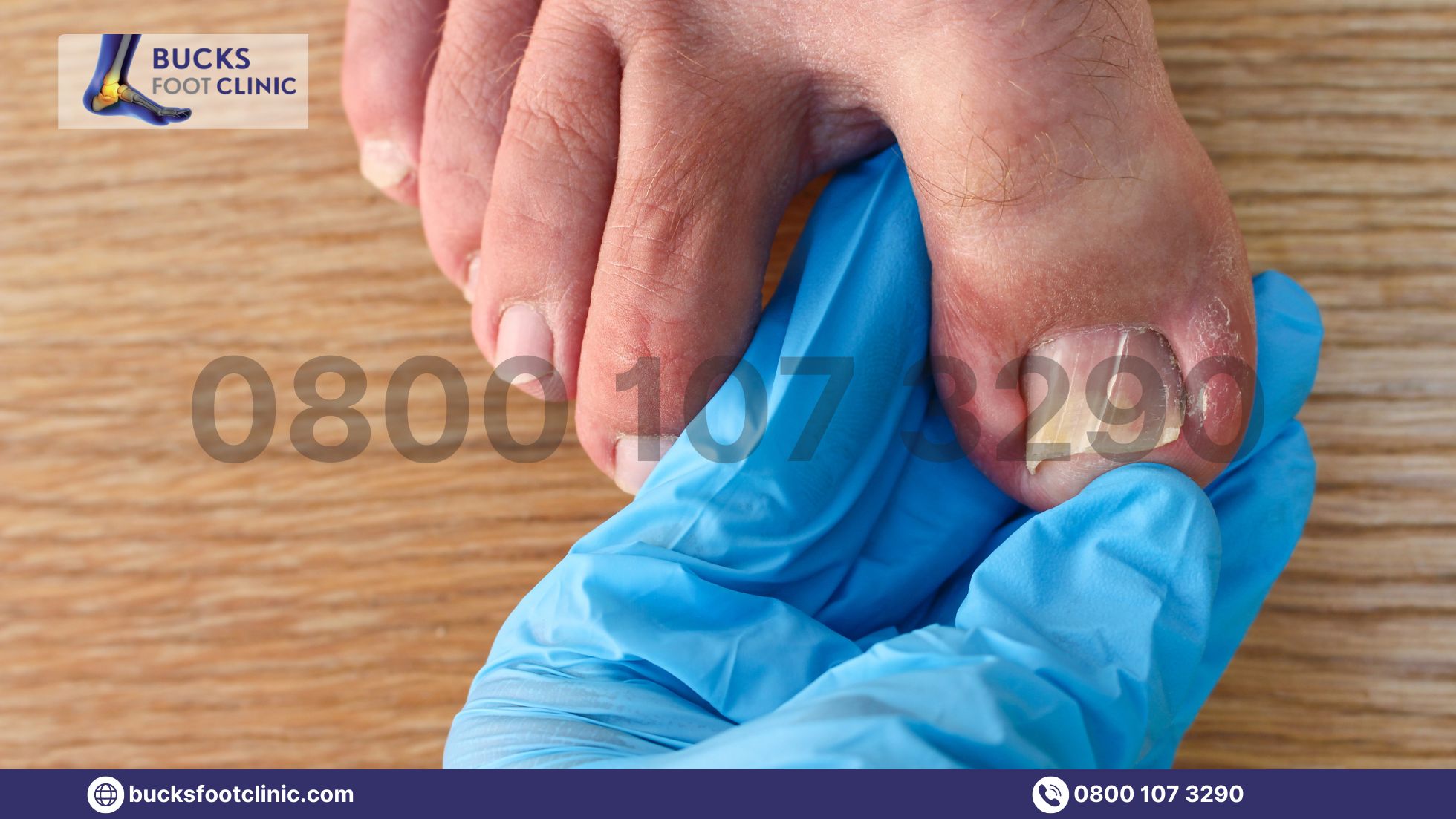Sports enthusiasts often push their bodies to the limit, demanding peak performance and endurance. In this pursuit, the role of sports podiatry emerges as a crucial component in achieving optimal athletic outcomes. This comprehensive guide delves into the meaning of podiatry, emphasising its significance in the realm of sports, and sheds light on how professionals, like those at Bucksfoot Clinic, contribute to athlete well-being.
Understanding Podiatry
What does Podiatry mean?
Podiatry is a specialised branch of medicine focused on the diagnosis, treatment, and prevention of conditions related to the foot, ankle, and lower extremities. It encompasses a holistic approach to foot health, acknowledging the integral role these body parts play in overall well-being.
The Role of a Podiatrist: Beyond Foot Care
A podiatrist is a medical professional dedicated to addressing a range of foot and ankle issues. Their expertise extends beyond treating existing conditions; they are essential in preventive care, especially in the dynamic field of sports.
Are custom orthotics necessary for every athlete?
Custom orthotics are designed for individuals with specific foot imbalances or conditions. Whether they are necessary depends on the individual’s biomechanical needs.
Can sports podiatry help with existing injuries?
Yes, sports podiatrists are trained to assist in the rehabilitation and management of existing foot and ankle injuries in athletes.
The Significance of Sports Podiatry
- Optimising Athletic Performance
Sports podiatry is not solely about treating injuries. It plays a proactive role in enhancing athletic performance by addressing biomechanical imbalances, gait issues, and footwear concerns.Preventing and Managing Injuries
One of the primary focuses of sports podiatry is injury prevention. Therefore, by assessing an athlete’s foot structure, gait, and footwear, podiatrists can identify potential issues and implement preventive measures, reducing the risk of injuries.Here’s two of the most common sports injuries that podiatrists encounter along with their general treatment methods:
Stress FracturesInjury Overview
- Stress fractures result from repetitive stress on bones, common in sports with high-impact or repetitive movements.
- Athletes may experience localised pain and swelling, particularly during activity.
Podiatric Treatment
- Diagnostic Imaging: Utilising imaging studies, such as X-rays or MRIs, to confirm the presence and location of stress fractures.
- Activity Modification: Recommending temporary modification or cessation of high-impact activities to promote healing.
- Orthotic Support: Providing orthotic devices to redistribute pressure and reduce stress on the affected bone.
- Gradual Return to Activity: Guiding athletes through a gradual return to activity to prevent reoccurrence.
Shin Splints
Injury Overview- Shin splints manifest as pain along the shinbone and are common in activities involving repetitive impact.
- Overuse or sudden increases in activity intensity can contribute to this condition.
Podiatric Treatment
- Biomechanical Assessment: Evaluating gait and foot mechanics to address underlying causes.
- Orthotic Intervention: Providing custom orthotics to enhance shock absorption and support foot structure.
- Activity Modification: Advising on gradual increases in activity intensity to prevent recurrence.
- Physical Therapy: Incorporating physical therapy to strengthen muscles and improve flexibility.
Bucksfoot Clinic: Your Podiatry Partner
Professional Assessment and Diagnosis
Bucksfoot Clinic stands at the forefront of podiatric care in the UK. Their team of experienced podiatrists conducts thorough assessments, employing cutting-edge diagnostic tools to identify specific concerns.
Customised Treatment Plans
Every athlete is unique, and so are their podiatric needs. Bucksfoot Clinic tailors treatment plans to address individual biomechanical factors, ensuring optimal outcomes for performance and injury prevention.
Practical Steps in Sports Podiatry
Biomechanical Analysis: A Foundation for Precision
Understanding Gait Patterns
- Sports podiatrists initiate the process with a comprehensive analysis of an athlete’s gait, deciphering how each foot interacts with the ground during movement.
- Utilising cutting-edge technology, such as gait analysis, provides a detailed assessment of biomechanical intricacies, offering insights into potential stress points and irregularities.
Identifying Imbalances and Abnormalities
- Through meticulous examination, podiatrists pinpoint biomechanical imbalances or abnormalities in foot structure that may impact performance or predispose athletes to injuries.
- By understanding the athlete’s unique biomechanics, podiatrists tailor interventions to address specific concerns.
Orthotic Prescription: Precision Support for Every Stride
Custom Orthotics for Individual Needs
- Podiatrists design custom orthotics, personalised inserts fitted to the contours of an athlete’s feet. These orthotics address specific imbalances, providing targeted support during physical activities.
- Custom orthotics contribute to improved foot alignment, distributing pressure evenly and mitigating the risk of overuse injuries.
Enhancing Comfort and Stability
- Athletes receive guidance on selecting appropriate footwear. Podiatrists may recommend specific shoe types or modifications to ensure optimal comfort and stability, aligning with the individual’s biomechanical requirements.
Injury Rehabilitation: Restoring and Strengthening
Rehabilitation Strategies
- In cases where an athlete is recovering from a foot or ankle injury, sports podiatrists collaborate with other healthcare professionals to develop comprehensive rehabilitation plans.
- Integrating exercises that focus on strengthening foot and ankle muscles aids in the recovery process, fostering resilience against future injuries.
Holistic Approach to Recovery
- Sports podiatrists adopt a holistic approach, considering the interconnectedness of the entire kinetic chain. Rehabilitation strategies encompass not only the injured area but also related muscles and joints.
Educational Guidance: Empowering Athletes
Foot Health Education
- Empowering athletes with knowledge about proper foot care and preventive measures is integral to sports podiatry.
- Providing guidance on warm-up routines, suitable footwear choices, and recognizing early signs of discomfort fosters proactive foot health management.
Long-Term Performance Strategies
- Sports podiatrists work collaboratively with athletes to develop long-term strategies for maintaining optimal foot health. This includes ongoing monitoring, periodic assessments, and adjustments to interventions based on the athlete’s evolving needs.
Conclusion
In conclusion, sports podiatry is not just a specialty for athletes; it’s a discipline that promotes optimal foot health for individuals at every level of physical activity. Bucksfoot Clinic exemplifies excellence in podiatric care, providing athletes with personalised solutions to enhance performance and prevent injuries. As you embark on your athletic journey, remember that the foundation of peak performance begins with healthy and well-supported feet.
FAQ
How often should athletes undergo podiatric assessments?
Regular assessments, at least annually or when experiencing changes in performance or discomfort, are recommended for athletes.
Do I need a referral to visit Bucksfoot Clinic?
No referral is necessary. You can schedule an appointment directly with Bucksfoot Clinic for a podiatric assessment.
Can sports podiatry benefit non-athletes?
Yes, the principles of sports podiatry, such as biomechanical analysis and injury prevention, are applicable to anyone seeking optimal foot health.
Are the treatments at Bucksfoot Clinic covered by insurance?
Treatment coverage varies, and it’s advisable to check with your insurance provider to determine the extent of coverage for podiatric services.
What is the primary focus of sports podiatry?
Sports podiatry primarily focuses on optimising athletic performance, preventing injuries, and managing foot and ankle conditions in athletes.
How can podiatrists at Bucksfoot Clinic enhance my athletic performance?
The podiatrists at Bucksfoot Clinic employ advanced assessments and personalised treatment plans to address biomechanical factors, enhancing your overall athletic performance.









Recent Comments